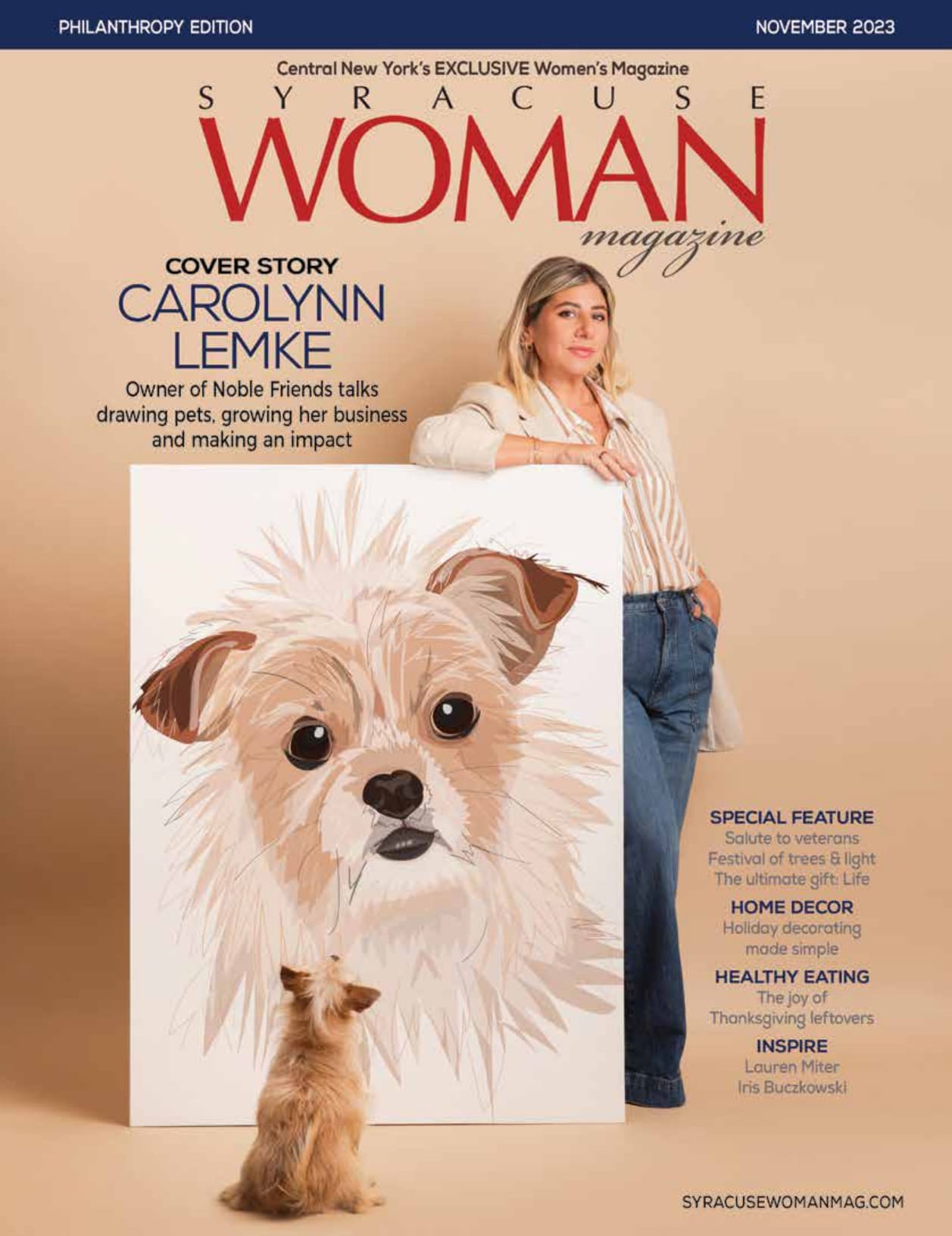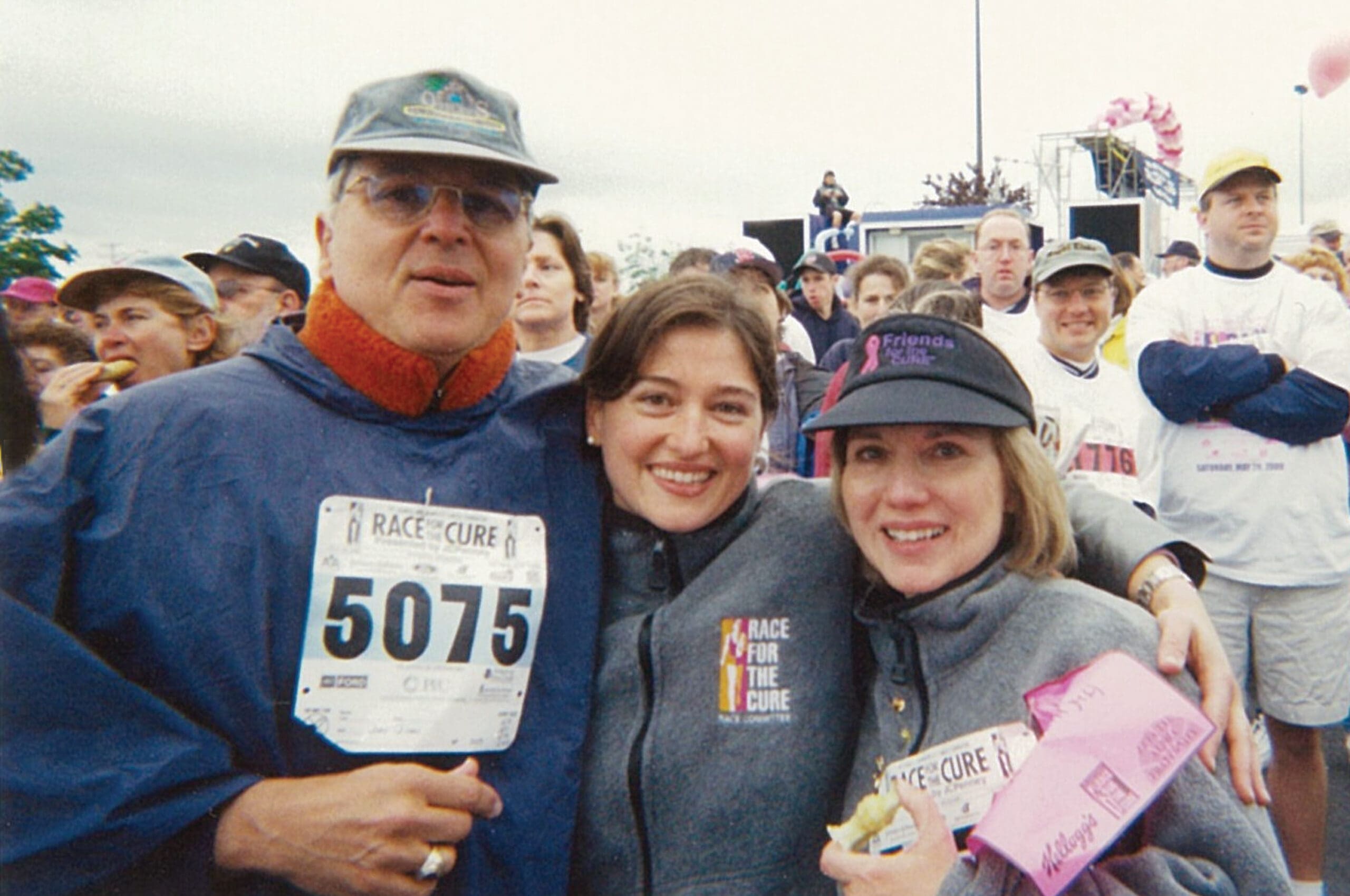By Sarah Hall
Photos by Alice G. Patterson
Kate Rolf has spent her entire career in health care. So it’s only fitting that she’s the chair of the American Heart Association’s 2020 Go Red for Women Campaign.
“I feel like it gives me an opportunity to speak what we’re doing as an employer and what others can do out there in the community to make a difference,” said Kate, CEO of Nascentia Health. “Just taking small steps can make a big difference in your heart health.”
That’s the idea behind the American Heart Association’s Go Red for Women campaign — that making small life changes can help defeat cardiovascular disease, the No. 1 killer of women. The campaign was first launched in 2004 by the American Heart Association. The effort aims to raise awareness about the prevalence of heart disease in women — a woman dies of cardiovascular disease every 80 seconds. Meanwhile, 80 percent of cardiovascular disease is preventable. The Go Red Campaign shares health facts and tips to accomplish the following:
- Provide women with opportunities to prioritize and take charge of their own health
- Build communities that support and provide access to healthy choices
- Demand equal access to healthcare for all women and their families
- Increase opportunities for women in STEM for future generations
This year’s campaign aims to raise $450,000 towards these efforts. It’s Kate’s job to act as the face of the campaign and to head up the fundraising efforts.
She’s also responsible for spreading the message from the national American Heart Association: Be a relentless force. For Kate, that means using every means possible to spread the word.
“It’s just being relentless about giving the information out,” Rolf said. “It’s like work. You can send an email, you can put it in a newsletter, you can put it in the newspaper, you can put it on the radio, you can put it on the TV. But the information is only as good as the person receiving it. They’re not going to read it or for nothing, you know? So it’s sometimes it has to hit home. And sometimes it’s just got to be in the right medium and the right form for that person to ingest it or in that right situation or have the right friends that connect with them the right opportunity.”
The future of health care
Kate already has some experience in this arena, having run the Mohawk Valley’s Go Red campaign two years ago. She spent a number of years in the Utica-Rome area, starting in the health insurance industry before moving to human resources at Faxton-St. Luke’s Healthcare. Kate climbed the ladder at St. Luke’s, earning a master’s degree in health sciences and an MBA along the way, ultimately ending up as executive director of Managed Long Term Care and Home & Community Based Services.
In 2011, Kate was recruited to take over as CEO of Nascentia Health as it sought to consolidate the various programs and services provided by Visiting Nurse Association of Central New York, Inc., CCH Home Care & Palliative Services, Inc., Independent Health Care Services, Inc. and Home Health Aides of Central New York together under one umbrella. Under the auspices of Nascentia Health, home and community-based care is provided to seniors across Central New York, allowing them to maintain their independence while still receiving quality care.
“We’ve expanded Nascentia Health across 48 counties and providing long-term home care across Upstate New York,” Kate said. “It keeps individuals aging individuals out of nursing homes in the communities to live.”
Kate said providing this kind of care is especially important as the Baby Boomer generation reaches retirement age.
“I see this as the future of healthcare,” she said. “There’s not enough nursing homes. Some people don’t want to be in nursing homes, they don’t want to be in the hospitals. So what can we do to keep them at home for as long as we can?”
Heart-healthy habits
And as Nascentia works to keep its clients healthy and in their homes, its staff works to stay healthy in the office. The company has embraced a number of heart-healthy measures to encourage employees to hold themselves accountable and encourage healthy habits. Those efforts were enough to earn the organization a bronze award through the American Heart Association’s Healthy Employer Program in 2018 and a gold last year.
“We have a gym on-site, started bringing in physical trainers,” Kate said. “We changed up the cafeteria food so that there are now healthy choices in the vending machines instead of just junk food. We do Lunch and Learns with them with physicians, with people providing different opportunities for people to learn about heart health and different types of health conditions to help them improve. We have these standing desks. And just trying to do things to engage people to move more.”
Nascentia employees and clients are also encouraged to sign on for the American Heart Association’s Check-It Challenge, a wellness program where participants stay accountable for their cardiovascular health by monitoring their blood pressure. Participants can use an app for online tracking or fill out a worksheet. According to the AHA’s website, the program aims to “eliminate high blood pressure as a health disparity among Americans. The program launched as a pilot in August 2012 with a focus on top 18 markets nationwide. As of June 2017, the program has expanded to over 150 cities, with 400,000 participants enrolled with an average drop in systolic blood pressure of 11 mm Hg.”
Kate said the initiative has really taken off.
“It’s a really good opportunity to have a collective number of people really follow and reduce their blood pressure,” she said. “Having a collective group trying to do the Check-It Challenge in a workplace, you have a whole group of people doing it, that makes it a little more fun. ‘Okay, everyone’s going do it, so I’m going do it too.’ And then it just adds that little safety measure.”
The Check-It Challenge launches Feb. 1 and runs through May 31. For more information, visit heart.org/en/affiliates/missouri/saint-louis/check-it-stl
Nascentia also encourages employees to keep track of their weight and cholesterol and offers insurance incentives for those who see an improvement in those numbers. Kate said doing so pushes employees to make healthier choices.
“Doing steps like this help and it’s something engaged in our employees to exercise more,” she said.
And those initiatives come straight from the top.
“We designate different leaders to participate and help me get others involved,” Kate said. “And that’s one thing we’re trying to do — each meeting, we’ll start that meeting, let’s check her blood pressure, but I want them also to go back, let’s go to your organization to do the same thing. And then we start tracking and then make that not just your organizations, but your friends and your coworkers. How do we push it more and vocalize it more so that it spreads? So I mean, yeah, it’ll start on a on a campaign level, but word of mouth is so much stronger most of the time than anything else.”
Empowerment through knowledge
For Kate, it’s all about empowering women to make better choices about their health.
“Empowering women has always been very important [to me],” she said.
She noted that as she’s come up in the workplace, women have become more and more of a dominant force.
“Even back when I was a kid, there was so many more women in the home,” she said. “It was just now there’s almost as many men at home as there are women. You know, it’s commonplace for either way.”
Kate said while nursing tends to be a female-dominated profession, she’s still proud to say Nascentia’s employee base is more than 75 percent women.
“It’s a great thing to feel and see that we have that give that opportunity and pride to women that come here,” she said.
Kate said she also feels empowered to take on the Go Red campaign for this year. Her hope is to not only meet the $450,000 financial goal, but to really make a difference in expanding women’s knowledge about their cardiovascular health.
“[It’s] being able to really say that we did make a difference in people learning more. Have we been able to do this and we’ve been able to make a difference?” she said. “And is there a measurable difference that we can actually come back and say, ‘Yes, look at that. Look at this Syracuse, New York, this small city in the scope of the United States really did this and that, holy cow, they’re on the map for this.’ That’d be great.”





